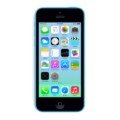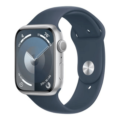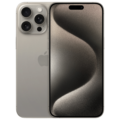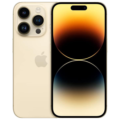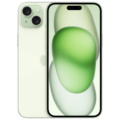- Home
- Apple Devices
- Apple iPad
- Apple iPad mini 3 full specifications
Apple iPad mini 3 full specifications

SPECIFICATIONS
General
| Status | Discontinued |
| Announced |
2014, October |
| Released | 01 October, 2014 |
| Model |
A1599, A1600, iPad4,7, iPad4,8, iPad4,9 |
| Price Apple iPhone Price in USA, UK, Canada, Australia, India, Pakistan, China, Japan and Europe |
EUR 400 USD 434 |
Network
| Technology |
GSM / CDMA / HSPA / EVDO / LTE |
| 2G Network | GSM 850 / 900 / 1800 / 1900 CDMA 800 / 1900 |
| 3G Network | HSDPA 850 / 900 / 1700 / 1900 / 2100 CDMA2000 1xEV-DO |
| 4G Network |
1, 2, 3, 4, 5, 7, 8, 13, 17, 18, 19, 20, 25, 26 - A1600 1, 2, 3, 5, 7, 8, 18, 19, 20, 38, 39, 40 - A1601 |
| Speed | HSPA 42.2/5.76 Mbps, LTE Cat3 100/50 Mbps, EV-DO Rev.A 3.1 Mbps |
| GPRS GPRS (General Packet Radio Service) is a packet oriented mobile data service on the 2G and 3G cellular communication system's global system for mobile communications (GSM), Generally, GPRS is used for the purpose of wireless data transfer, such as sharing pictures and videos or browsing the Internet via a mobile phone connection. | |
| EDGE EDGE (Enhanced Data GSM Environment) is a wireless network technology generally considered the next step in the 2G network offers data transfer rates up to four times faster than ordinary GSM networks, Generally, EDGE is used for the purpose of wireless data transfer, such as sharing pictures and videos or browsing the Internet via a mobile phone connection. |
Body
| Dimensions | 200 x 134.7 x 7.5 mm (7.87 x 5.30 x 0.30 in) |
| Weight | 331 g (Wi-Fi) / 341 g (3G/LTE) (11.68 oz) |
| Colors |
Space Gray/Black, Silver/White, Gold |
| SIM SIM (Subscriber Identity Module) is a small card that contains mobile network subscriber's account information. This allows the phone using the card to attach to a mobile network. The SIM card is most commonly associated with GSM and UMTS mobile networks. Moving a SIM card from one phone to another allows a subscriber to switch mobile phones without having to contact their mobile network carrier. SIM cards can also be used by a phone to store limited amounts of data, such as phone numbers and text messages. |
Nano-SIM and eSIM |
Display
| Display Type Display Technology => A number of display technologies and types used in mobile phones => TFT (Thin Film Transistor), IPS (In-Place Switching), OLED (Organic Light Emitting Diode), AMOLED (Active-Matrix Organic Light-Emitting Diode), Super AMOLED (an even advanced version of AMOLED), Resistive Touchscreen (Resistive touchscreens contain two layer of conductive material with a very small gap between them which acts as a resistance), Capacitive Touchsceen (Capacitive touchscreen technology consists of a layer of glass coated with a transparent conductor) | IPS LCD |
| Size | 7.9 inches, 193.3 cm2 (~71.7% screen-to-body ratio) |
| Resolution | 1536 x 2048 pixels, 4:3 ratio |
| Pixel Density Pixel Density (PPI) is refers to the concentration of pixels on a particular display, measured in pixels per inch (ppi). Pixel density is calculated by dividing the diagonal pixel resolution of a display by its diagonal size, higher pixel density better display quality. | (~324 ppi density) |
| Touch Screen | Haptic Touch |
| Display Protection Display Protection => Gorilla Glass is a special alkali-aluminosilicate glass shield with exceptional damage resistance that helps protect mobile displays from scratches, drops, and bumps of everyday use, It is always better to go for a smartphone with Gorilla Glass for that added protection and peace of mind. | Oleophobic coating |
| Multitouch |
Camera
| Primary Camera is able to capture photographs and usually videos, The most important characteristics of a camera are the resolution (measured in megapixels), lens focus type (fixed or automatic), higher megapixel cameras are known to capture higher quality photos, but not always a good measurement of the photos quality. |
5 MP, f/2.4, 32mm (standard), AF |
| Video | 720p@30fps |
| Camera Features |
face detection, FaceTime over Wi-Fi or Cellular |
| Selfie Camera |
1.2 MP |
| Video | 720p@30fps |
| Camera Features |
face detection, FaceTime over Wi-Fi or Cellular |
Hardware
| Chipset Chipset is a group of integrated circuits designed to perform one or a more dedicated functions, often with real time computing constraints, Popular smartphones are equipped with more advanced embedded chipsets that can do many different tasks depending on their programming. | Apple A7 (28 nm) |
| CPU CPU (Central Processing Unit) mostly known as processors, CPU processes instructions in order to carry out certain functions that make your device operate properly. Processors are often described as the brain of computers, smartphones and tablets, Smartphones and tablets rely on processors to carry out their every task, Processors are an incredibly important factor in selecting any type of computing device, including your smartphone. | Dual-core 1.3 GHz Cyclone (ARM v8-based) |
| GPU GPU (Graphics Processing Unit) is a single-chip processor designed to rapidly manipulate and alter memory to accelerate the creation of images in a frame buffer intended for output to a display, This includes things such as lighting effects, object transformations, and 3D motion. | PowerVR G6430 (quad-core graphics) |
| RAM (Memory) RAM (Random Access Memory) is a type of computer memory that can be accessed randomly, any byte of memory can be accessed without touching the preceding bytes that allows information to be stored and accessed quickly from random locations. RAM is the most common type of memory found in computer systems, smartphones, tablets and other electronic devices. | 1 GB |
| Internal Storage Internal Storage is a data storage space (flash memory) mostly used in smartphones, tablets and other electronic devices where operating system, apps, music, photos, videos, files and other user data Is stored. | 16GB/32GB/64GB/128GB |
| Card Slot Memory Card Slot is a special slot for inserting a memory card. Memory cards allow you to expand the phone's built-in memory, A memory card (sometimes called a flash memory card or a storage card) is a small storage medium used to store data such as text, pictures, audio, and video, for use on small, portable or remote computing devices such as mobile phones, mp3 players, digital cameras. | No |
| Sensors Sensors are electronic components that detects and responds to some type of input from the physical environment. The specific input could be light, heat, motion, moisture, pressure and location, The output is generally a signal that is converted to use in computing systems, a location sensor, such as a GPS receiver is able to detect current location of your electronic device. |
Fingerprint (front-mounted), accelerometer, gyro, compass |
Software
| Operating System OS => Every computer system run on a base software called Operating System (OS). Operating System controls all basic operations of the computer (such as smartphone, PDAs, tablet computers and other handheld devices). The Operating System allows the user to install and run third party applications (apps), apps are used to add new functionality to the device. | iOS 8.1, upgradable to iPadOS 12.5.6 |
| Browser (Default) | Safari |
Media
| Loudspeaker | Yes, with stereo speakers |
| 3.5mm Jack | |
| FM Radio | No |
Connectivity
| Bluetooth Bluetooth is a wireless communications technology for exchanging data between mobile phones, headsets, computers and other network devices over short distances without wires, Bluetooth technology was primarily designed to support simple wireless networking of personal consumer devices. | 4.0, A2DP, EDR |
| Infrared Infrared connectivity is an old wireless technology used to connect two electronic devices. It uses a beam of infrared light to transmit information and so requires direct line of sight and operates only at close range. | |
| Wi-fi Wi-Fi is a popular wireless networking technology using radio waves to provide high-speed network connections that allows devices to communicate without cords or cables, Wi-Fi is increasingly becoming the preferred mode of internet connectivity all over the world. | 802.11 a/b/g/n, dual-band |
| Wi-fi Hotspot | |
| GPS GPS The Global Positioning System is a satellite-based radio navigation system, GPS permits users to determine their position, velocity and the time 24 hours a day, in all weather, anywhere in the world, In order to locate your position, your device or GPS receiver must have a clear view of the sky. | GPS, A-GPS |
| NFC NFC (Near field communication) is a set of standards for smartphones and similar devices to establish peer-to-peer radio communications with each other by touching them together or bringing them into proximity, usually no more than a few inches. |
Battery
| Battery Type Battery Type => Cell phones run on various kinds of batteries depending on the manufacturer, phone size or shape and features. There are basically four types of cell phone batteries => Lithium Polymer, Lithium Ion, Nickel Metal Hydride and Nickel Cadmium. | Li-Po |
| Capacity Battery Capacity is a measure (typically in Amp-hr) of the charge stored by the battery, and is determined by the mass of active material contained in the battery. The battery capacity represents the maximum amount of energy that can be extracted from the battery under certain conditions. | 6470 mAh |
| Placement | Non-removable |
| Wireless Charging Wireless Charging (Inductive Charging) uses an electromagnetic field to transfer energy between two objects. This is usually done with a charging station. Energy is sent through an inductive coupling to an electrical device, which can then use that energy to charge batteries or run the device. | Unknown |
| Fast Charging | Unknown |
| Standby Standby Time is the total amount of time that you can leave your is fully charged, turned on and ready to send and receive calls or data transmissions before completely discharging the battery. | Unknown |
| Talk Time Talk Time is the longest time that a single battery charge will last when you are constantly talking on the phone under perfect conditions, Ambient temperature and highly dependent on the cellular network environment such as the distance to the closest cell network tower. | Up to 10 h (multimedia) |
| Audio Playback | Unknown |
| Video Playback | Unknown |
| Internet Usage | Unknown |
MISC
Description
The Apple iPad Mini 3 Spec, released in October 2014, is a compact tablet that blends portability with performance. Despite being discontinued, it remains a popular choice among those seeking a reliable device for everyday use. This article delves into the iPad Mini 3’s specifications, features, and performance, offering an in-depth review for potential users.
Table of Contents
Design and Build Quality

The iPad Mini 3 spec retains a sleek and premium design synonymous with Apple products. Measuring 200 x 134.7 x 7.5 mm and weighing 331g (Wi-Fi model) or 341g (3G/LTE model), it is both lightweight and easy to handle. The tablet’s aluminum body exudes durability, while its 7.9-inch IPS LCD screen ensures an immersive viewing experience. Available in three colors—Space Gray, Silver, and Gold—it caters to diverse aesthetic preferences.
Apple iPad Mini 3 Spec Display
The iPad Mini 3 spec features a 7.9-inch Retina Display with a resolution of 1536 x 2048 pixels and a pixel density of approximately 324 ppi. The display provides sharp, vibrant visuals, making it ideal for tasks such as reading, streaming, and gaming. Additionally, the screen is protected by an oleophobic coating, which resists fingerprints and smudges for a cleaner viewing experience.
Performance

Powered by the Apple A7 chipset (28nm) and a dual-core 1.3 GHz Cyclone CPU, the iPad Mini 3 offers reliable performance for everyday tasks. Its 1GB RAM and PowerVR G6430 GPU support light multitasking and smooth graphics rendering. While not designed for high-end gaming or intensive applications, it handles basic tasks like web browsing, email, and media playback efficiently.
Key Performance Metrics:
- Operating System: iOS 8.1 (upgradable to iPadOS 12.5.6)
- Basemark X Score: 14,781
Storage Options
The iPad Mini 3 spec is available in three storage configurations:
- 16GB
- 64GB
- 128GB
However, the lack of a microSD card slot limits storage expansion. Users needing more space may prefer higher-capacity models.
Camera Capabilities

The device comes equipped with:
- Rear Camera: 5 MP, f/2.4 aperture, autofocus, HDR, and 1080p video recording at 30fps.
- Front Camera: 1.2 MP, capable of 720p video recording and FaceTime over Wi-Fi or cellular.
While not suited for professional photography, these cameras perform adequately for casual use, such as video calls and quick snapshots.
Battery Life

The iPad Mini 3 spec houses a 6470 mAh Li-Po battery (24.3 Wh), providing up to 10 hours of multimedia use. This long-lasting battery life makes it a dependable companion for travel and extended usage sessions.
Connectivity and Features
The tablet offers robust connectivity options:
- Wi-Fi: 802.11 a/b/g/n, dual-band
- Bluetooth: 4.0 with A2DP and EDR
- Cellular Models: Supports GSM, CDMA, HSPA, EVDO, and LTE
Additional Features:
- Nano-SIM + eSIM for cellular models
- GPS and GLONASS (available in cellular models)
- Lightning Connector (USB 2.0)
- Stereo Speakers and a 3.5mm headphone jack
- Front-mounted fingerprint sensor for added security
Audio and Speaker Quality
The stereo speakers deliver clear audio, although not as powerful as modern tablets. Audio quality scores include:
- Voice: 65dB
- Noise: 63dB
- Ring: 70dB
For private listening, the 3.5mm jack remains a convenient feature.
Limitations
While the Apple iPad Mini 3 spec offers several advantages, it does come with a few drawbacks:
- Outdated Hardware: The A7 chipset and 1GB RAM may struggle with modern apps and updates.
- Limited Storage: No expandable memory option.
- Discontinued Status: Software updates and official support have ceased.
Price and Availability
At launch, the iPad Mini 3 was priced at around 400 EUR, positioning it as a premium compact tablet. While new units are no longer available, refurbished models can be found at lower prices, making it an affordable option for budget-conscious buyers.
Who Should Buy the iPad Mini 3?
The iPad Mini 3 is best suited for:
- Casual users seeking a lightweight, portable tablet
- Individuals need a reliable device for web browsing, reading, and video streaming
- Those on a budget who don’t require the latest technology
Conclusion
The Apple iPad Mini 3 spec is a compact, stylish tablet with a high-resolution display and dependable performance for basic tasks. While it may not compete with modern tablets in terms of power, it remains a viable choice for users prioritizing portability and affordability.
